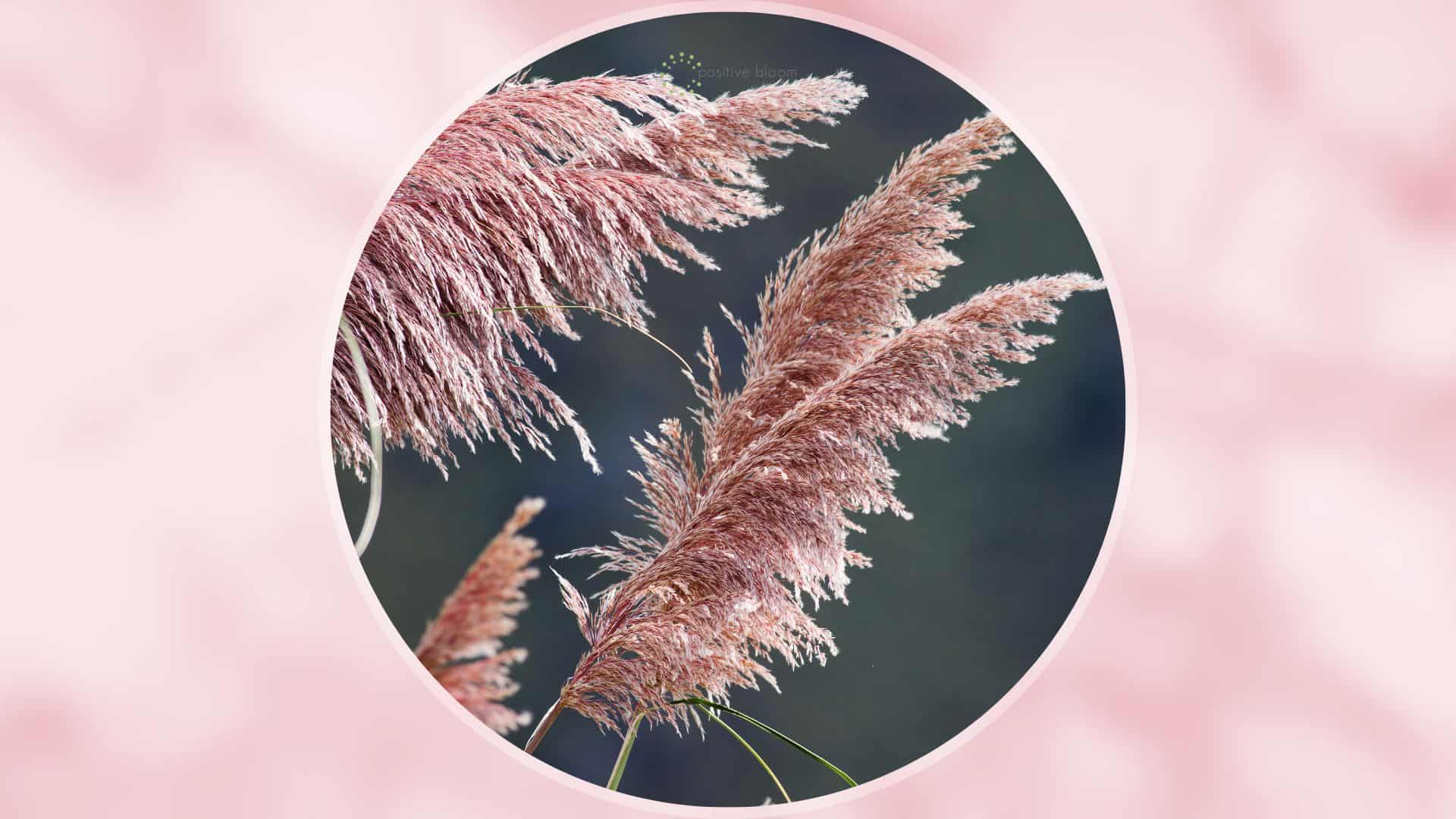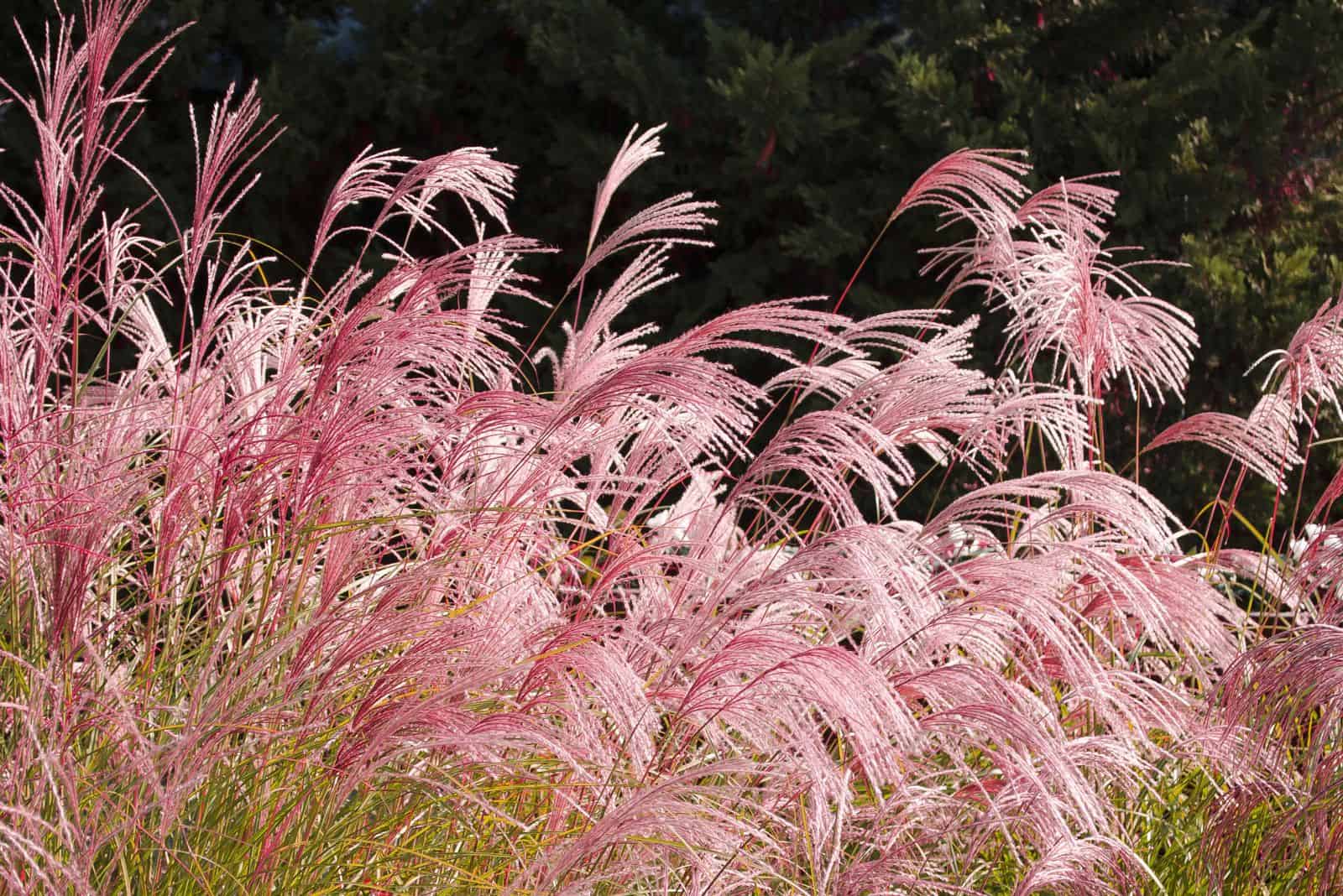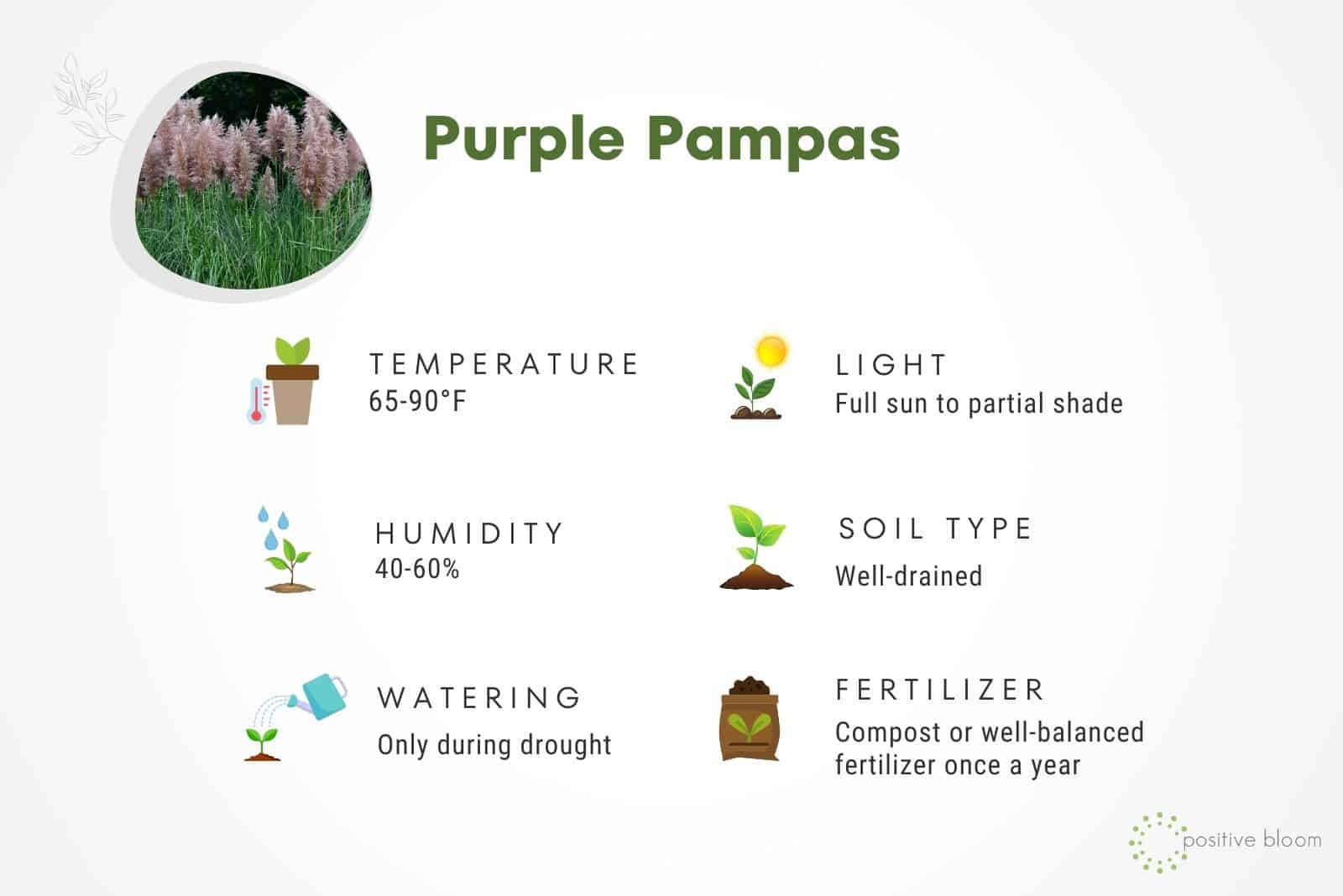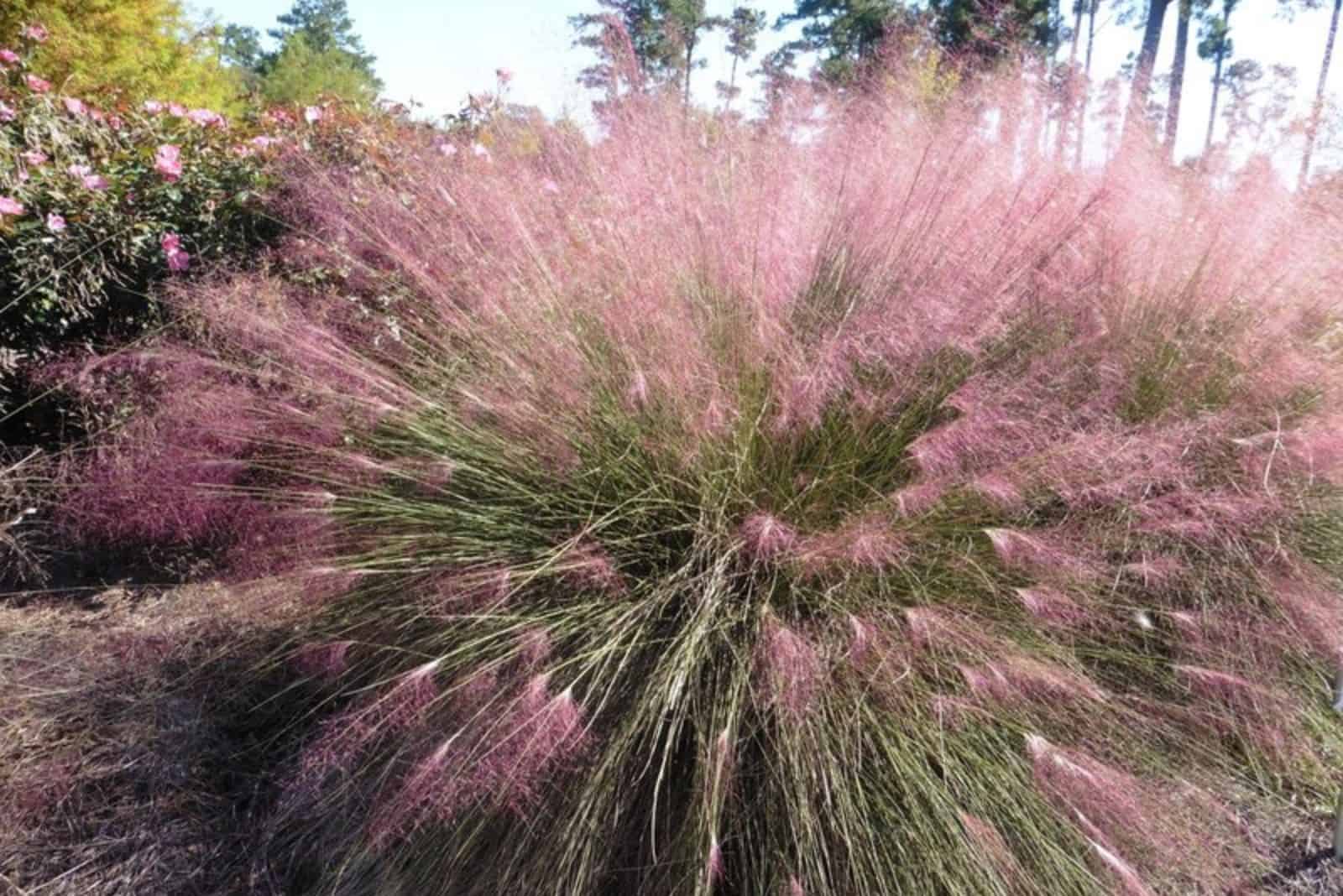There are many ornamental grasses that we can incorporate into our landscapes, and one of them is purple pampas grass.
This plant has everything a beginner landscaper needs; it’s got color to show off, height to offer you privacy, and is easy to care for.
And you can even use it to stabilize places prone to erosion due to its deep roots.
But how do you grow it?
We’ll include some excellent tips and tricks for planting this ornamental grass in your front yard, as well as a couple of its requirements you should meet in order for it to thrive.
Before we get there, let’s learn some specifics about it:
[table id=653 /]
How To Plant Purple Pampas Grass
Pampas grass is on the list of plants for balcony privacy due to its height, but you can also move it to your yard and plant it there.
If you want to grow this species outside, you have to find a suitable location for it that gets plenty of light, prepare the soil, and then get ready to plant it.
We know that getting things done for the first time can be scary, so we’ll discuss all the steps in more detail.
Choosing The Location
One of the things that we love about pampas grass is that it requires full sun to thrive, but it can also tolerate a bit of shade.
Therefore, you don’t have to worry too much about its location. Simply choose a spot that gets plenty of sunlight, and this ornamental grass will thrive.
Preparing The Soil
Once you’ve chosen a suitable location, it is time to prepare the substrate.
You know, I didn’t think that having a well-draining garden soil was that important, especially for a plant like pampas, but once my first attempt to plant it failed, I reconsidered this notion!
The first thing I did was invest in a tiller for breaking new ground since it can help you prepare the growing medium with less trouble.
Then, as pampas grass cannot tolerate heavy and clay soils, I added some compost and horticultural sand to improve the soil’s drainage. You can also use perlite or any other material that increases drainage.
Technically, purple pampas grass can grow in various soils, but you need to ensure excellent drainage for it to thrive.
Planting
Once you prepare the location and the soil, it is time to plant. You can get young plants ready for the transplant or start with seeds.
The seeds usually take about 2-3 weeks to sprout and growers usually plant them sometime between February and April. If you don’t want to wait until the outdoor temperatures are warm enough, you can start them inside.
Place them in a nursery filled with moist seed-starting mix, ensure that the temperatures are around 60-65 degrees Fahrenheit, and that’s it! Once the seeds sprout, you can take them to a location with bright indirect sunlight and make sure that the growing medium is never dry.
Move the seedlings outdoors when temperatures are warm (we did it in spring), water them, and that’s all you need to do.
When transplanting your seedlings (or nursery-bought ones), consider their adult size and space them about 6-8 feet apart if you want to create a hedge, or 14 feet apart if you want to disperse them around your garden.
When planting, untangle the roots if they’re intertwined and place the young plant in the hole so that its root system is at the same depth as it was in the container.
Purple Pampas Care Guide
One of the things we love most about purple pampas grass is that it is a low-maintenance plant that can add a lot of depth and texture to your landscape.
Plant it in a location with full sun and a well-draining growing substrate to get the best flowers, water it only during prolonged drought, and occasionally feed it with additional nutrients.
Of course, you should prune it to maintain its shape and control its spread over your garden, and we’ll talk more about all this in the following sections.
Light Requirements
This outdoor ornamental grass thrives in full sun conditions, although it can tolerate some shade, especially during hot summers.
However, if you expose it to too much shade, it won’t produce many purple flowers.
Water And Humidity
Established purple pampas grass is fairly tolerant of drought, so you won’t need to irrigate it unless there’s been a prolonged shortage of rainfall.
However, you do have to water young plants from time to time to help them establish a deeper root system. Irrigate them periodically for a couple of months after planting, and once the plant establishes you can let nature take care of it.
Furthermore, the worst time to water your plants is at midday or in the early afternoon since all moisture will soon evaporate and leave your plant dry. Nighttime irrigation is also a bad choice since the plant will sit in water for too long, which may increase the risk of root rot.
Instead, moisturize your plants in the morning or late afternoon, and your pampas will flourish.
Humidity
Pampas perennial grasses can tolerate a wide range of humidity, but it usually thrives in regions where average air moisture levels are around 40-50%.
You should also ensure that the humidity is high when trying to germinate the seeds since that can aid propagation. (You can put a humidity dome over it and mist from time to time.)
Temperature
Since purple pampas grass is native in USDA hardiness zones 7-11, it flourishes in temperatures between 65 and 90 degrees Fahrenheit.
In these regions, you can leave it outside all year long, but if you live in a colder climate you should take your purple pampas indoors.
You can take a part of the plant, place it in a large container, and then take it back outside once the weather gets warm enough.
Soil And Fertilizer
This pampas grass is amazing as it can thrive in all sorts of soil types, including clay, sandy, loamy, and salty ones. The only requirement it has is that the growing medium is well-draining.
You can increase drainage by adding some compost to your native soil or incorporating some grit if the substrate is too heavy and retains too much water.
Fertilizer
It’s always useful to know the differences between compost and fertilizer since they can help you decide which one to choose when feeding your plants.
Compost is a soil amendment that introduces organic matter and increases drainage, aeration, and water retention.
Fertilizer, on the other hand, simply adds more nutrients to the substrate without amending it.
When it comes to purple pampas grass, you can give it some nutrients if your growing medium isn’t that fertile. However, this isn’t necessary, although it will make your plant grow more quickly.
Many growers prefer mixing in some compost at the beginning of the year, but you can also use well-balanced fertilizer once a year if you want to ensure proper growth.
Pruning
Since pampas grasses are fast-growing species, you should prune them regularly to control their growth.
We prefer cutting them to the base in late winter, but you can trim them in early spring if you live in a colder region.
When pruning pampas grass, first remove the spent flower stalks and then trim the foliage.
Plenty of old and dry growth can be a fire hazard, so don’t skip out on yearly pruning.
Here’s how the pros do it:
Is Purple Pampas Invasive?
According to the UF/IFAS assessment, pampas grasses are an invasive species and not recommended for use.
However, if you do want to decorate your landscape with it (like many of us Floridians do), you can prevent this grass from becoming invasive by only growing plants with female flowers.
You can grow male ones, but the female blossoms are larger, fuller, and have those silky blades we all love.
FAQ
How long does purple pampas live?
Purple pampas grass is a perennial plant that lives between 10-15 years.
Furthermore, it takes it about 2-3 years to reach maturity (sometimes even four), so you’ll have to wait a while before enjoying its full glory.
How messy is purple pampas grass?
Purple pampas is very messy if you don’t prune it once a year, and it grows into huge clumps that are unattractive.
Its hairy base can overtake any design, and pruning it may be even messier, but if you want to reduce your chores after trimming you can bind the plant with duct tape and prune it that way.
Final Thoughts
Purple pampas grass is a gorgeous ornamental plant that you can use as a focal point for your garden or to create a hedge.
And what’s more, it’s incredibly easy to care for. Simply plant it in a well-draining growing substrate and a sunny location, and that’s it.
You only need to water young plants, while established ones can survive solely on rainfall.
The good news is that you don’t have to feed it more than once a year (and even that’s not vital) and you only need to prune it before the temperatures increase after winter.
However, this plant is listed as invasive, so you should be careful with it. We only grow plants with female flowers to prevent them from overtaking our yard.
Until next time!




